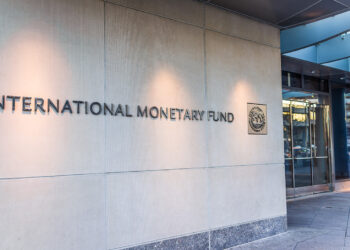While the worst of Australia’s inflation problems may now be in the past, the ongoing risk of inflation remaining “sticky” is continuing to weigh on the outlook for interest rates locally.
GSFM investment strategist Stephen Miller noted that, given its data-dependent position, the Reserve Bank of Australia (RBA) had little choice but to keep rates on hold in September after the latest data “pointed to some diminution of inflation pressure”.
This included the monthly consumer price index (CPI) released at the end of August which showed that inflation eased to 4.9 per cent over the 12 months to July.
But as the RBA’s future decisions will be impacted by how quickly inflation continues to ease, Mr Miller said that “stickiness”, particularly in services inflation, was a cause for concern.
“For one thing, the CPI indicator does not capture the full CPI basket, being heavily weighted to goods. July’s figure of 4.9 per cent reflected ongoing goods disinflation but little of still-high services inflation,” he explained.
“Indeed, governor Lowe in his final board meeting statement explicitly recognised this risk noting that ‘services price inflation has been surprisingly persistent overseas and the same could occur in Australia’.”
AMP chief economist Shane Oliver warned there is a high risk the disinflation process may pause, which he said has been highlighted by recent data out of Asia and Europe.
“Inflation rates rose in Korea, Taiwan, the Philippines, and Thailand driven by food and energy with core measures little impacted or still falling,” Dr Oliver noted.
“While not a major surprise given higher oil and gas prices lately, coming on the back of something similar in Europe last month, it highlights that the fall in inflation won’t go in a straight line and inflation risks remain significant. It’s likely to be a similar story for August inflation in both the US and Australia.”
According to Mr Miller, the risks of persistent stickiness in inflation are “arguably higher in Australia than elsewhere”.
“For another thing, there appears to be an emergent tendency for more wage increases to occur at the start of a new financial year, not the least reflecting the recent Fair Work Commission (FWC) wage review decision that takes effect from 1 July but is yet to be reflected meaningfully in any official data,” he continued.
“That circumstance presages a potentially meaningful acceleration of wage pressures in the second half of the year and probably means the August and September monthly inflation numbers and the September quarter CPI release (released late October) reveal some unwelcome ‘stickiness’.”
Despite these risks, and the RBA’s indications that “further tightening of monetary policy may be required to ensure that inflation returns to target”, Dr Oliver said that interest rates were still expected to remain on hold ahead of rate cuts beginning next year.
“If, as we expect, the economy continues to weaken as past rate hikes increasingly bite, this will maintain downwards pressure on inflation heading off any further rate hikes and ultimately allowing the RBA to cut rates next year,” he said.
“We are allowing for the first rate cut in the March quarter next year, albeit the risk is that this may be delayed if productivity remains poor, services inflation sticky and if home prices continue to surge (boosting household wealth).”
Meanwhile, Mr Miller said that “there does not seem to be any near-term catalyst that would lead the RBA board under the new governor to implement a policy rate increase at the October meeting”.
“At a minimum, the RBA would like the benefit of a look at the September quarter CPI data to be released on 25 October to ascertain whether the aforementioned risks are manifest.”
In his final speech as governor before Michele Bullock takes over on 18 September, Philip Lowe warned that Australia’s future may be marked by more erratic movements in inflation.







